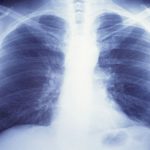
While pandemic lockdowns may have initially triggered feelings of isolation and worry, stay-at-home stress dissipated with time as people adjusted to their “new normal,” research suggests. In the study, scientists did a state-by-state analysis of Google search trends between January and June of 2020, covering topics such as COVID regulation policies, mental health concerns and in-home activities. On the “negative feelings” side of the ledger, search terms included “antidepressants” and “suicide.” More positive searches included “cooking” and “exercise tips.” Search trends were then stacked up against the varying timing and nature of each state’s particular lockdown experience. The result: “Google searches for mental health symptoms such as ‘isolation’ and ‘worry’ spiked after the implementation of the mitigation policies,” noted study author Bita Farkhad, an economist and a postdoctoral researcher in psychology at the University of Illinois Urbana-Champaign. But after two to four weeks, those spikes fell. In fact, Farkhad and her colleagues found that Google searches for terms that might indicate serious mental health issues — such as “suicide,” “antidepressant” and/or antidepressant drug names (Xanax, Prozac, Zoloft) — actually tended to drop off following the launch of stay-at-home orders. Why? The team theorized that not everything revolving around stay-at-home orders is by definition negative. For example, lockdowns also afford some with a rare opportunity to spend more time with loved ones, or to develop new,… read on > read on >
















